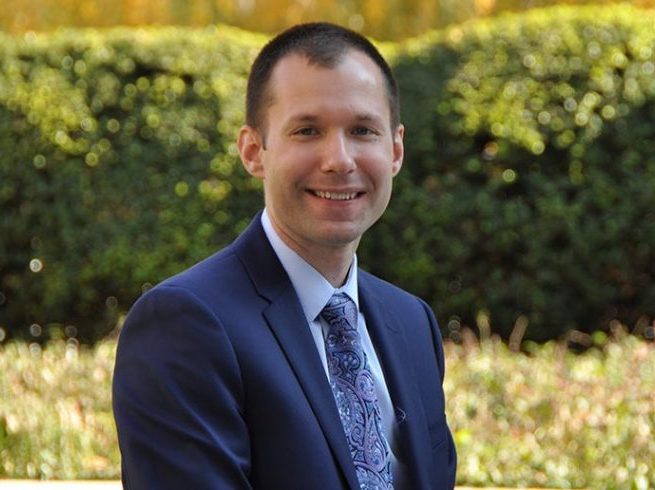
By Kelly Kultys
Despite the fact that Fordham recently ended its Excelsior campaign after generating $540 million, the university ended their fiscal 2014 year with a balance of just $446,884. Frank Simio, the vice president for finance and interim Chief Financial Officer, stressed at the university’s Planning and Budgeting day last Friday that there really was no budgetary relief provided from these funds.
The 10-year campaign provided the school with $108.1 million bookmarked for scholarships, $57.7 million for endowed chairs, $116.1 million for academic support, $125.1 million for facilities and $133.7 million in annual support. Simio was concerned with the annual support since this was money provided for the university as whole.
“Gifts don’t help the operating budget,” Simio said.
In a university-wide email sent by Rev. Joseph M. McShane, S.J., president of the university, he stated that he hopes this campaign will still be able to help the university in the long run, as “we just completed the largest capital campaign in Fordham’s history, coming in at $40 million over our goal.”
Still, $81.6 million of that was restricted to certain schools or programs. The remaining $52.1 million was divided throughout the 10 years to add to the budget, which gave an average of $5.2 million each year.
As for the 2014 fiscal year as a whole, the operating revenue totaled just under $504 million, which fell just $1 million shy of the projected budget for 2014, while operating expenses exceeded just over $503 million. Simio listed a few primary concerns with these numbers and was specifically concerned about the percentage of revenue coming from students.
“92.9 percent of revenue comes from students,” Simio said.
Compared to some of Fordham’s peer and aspirant universities, New York University relied on just 57 percent of its revenue from tuition in the 2015 fiscal year budget. Villanova University, in the 2014 fiscal year, got just over 64 percent of its revenue from students.
Another issue Simio discussed was that financial aid is needed to continue to attract high quality students to Fordham, but he was concerned that 45 percent of the freshman class received a discount on tuition. This aid takes away from the university’s projected revenue. For example, this year the university brought in $541 million, but only about $403 of that was added to the operating revenue after financial aid was taken out.
As for expenses, Fordham spends 61.6 percent of its money on personnel costs. This includes salaries, wages and fringe benefits for faculty, staff and administrators. Other expenses include money for capital projects, such as the renovations to the Lincoln Center campus, which received a lot of its funding from the Excelsior campaign.
“We opened the most expensive building in school history,” Simio said of the conjoined law school and residence hall at the Manhattan campus.
This past year, the university also purchased 45 Columbus Ave., where they plan to relocate a lot of their leased office space, which will save money in the long-term as Fordham will not have to pay rent to outside contractors.
Marco Valera, vice president of facilities, echoed Simio’s statements at a meeting with The Fordham Ram earlier this year.
He said that Lincoln Center has been the focus of major investment and that the old law school will be renovated into more space for the university over the next few years. At Rose Hill, Valera said that they closed their most recent capital project of renovated Loyola and Faber. Both Simio and Valera mentioned that there are plans to renovate the McGinley Center, but funding and planning for that is not currently finalized.
Still, Simio is pleased that there were no budget deficits, and the final balance of $446,884, up from last year’s balance of $10,348. However, the university is still concerned with the fact that graduate schools are not meeting their target enrollment, causing budgetary gaps. Simio also notes that the issue remains that families still caused hard economic times and many people are considering the value of college.
According to the Economic Policy Institute, approximately 8.5 percent of recent college graduates are unemployed, based on data gathered from April 2013 to March 2014.
Due to this statistic and residual economic issues from the recession, Simio said that the university can no longer raise tuition the way they had pre-recession. For example, in 2007, Fordham raised tuition around 8 percent, while its raise for 2015 is just 3.75 percent.
“Every 1 percent increase in rate equals 3 million in tuition revenue,” Simio said.
Simio expects this to continue for 2016-20, as the projected increases are no higher than 3.75 percent. Since the university depends heavily on its students, these issues are crucial for the university’s financial success.
In the email to the university on Tuesday, McShane expressed his concern: “This is the lowest increase in recent memory. With low rates of tuition increases comes slower revenue growth; with slower revenue growth comes a considerably reduced ability to meet rising expenses.”
Right now, the early projections for 2016 include an expected tuition hike of 3.75 percent, undetermined salary increases, probable maintaining of staff levels and a goal of controlling the university’s operating expenses.






































































































































































































